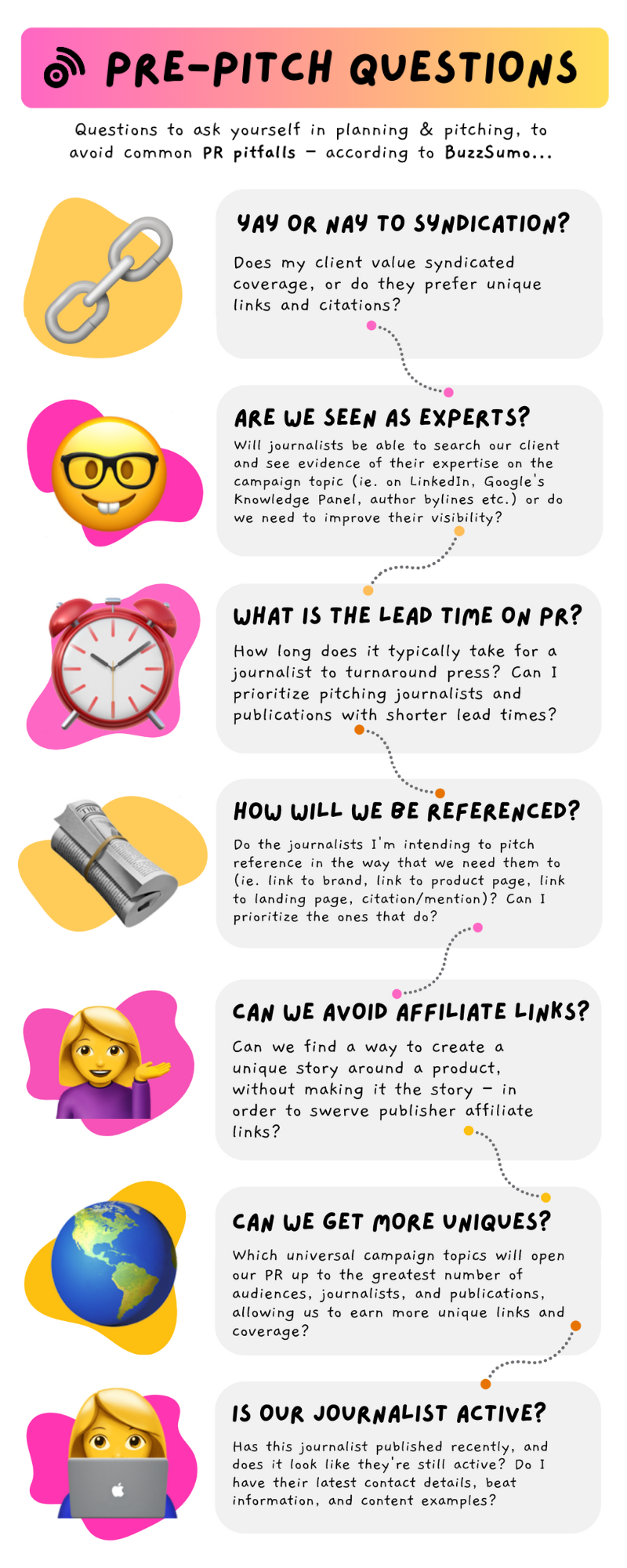There are plenty of problems to go around in PR.
And when I say problems, I’m not just talking about your typical everything-is-on-fire PR crisis…

I’m talking longer turnaround times on coverage, an uptick in media affiliate links, SEO-lite syndications – those niggling issues that push you slowly but surely over the edge.
It sucks, and I’m sorry this is happening to you.
But I come bearing good news. These PR problems can be avoided. It just involves a bit more groundwork at the pre-pitch stage.
In this article, I show you how to do just that, and throw in some advice from expert PRs for good measure!
Problem: Personnel Changes
Redundancies are rife among media outlets right now, and editorial teams are leaner than ever.
Recently the UK’s largest news publisher, Reach PLC, cut 450 roles — 70% of which were editorial.
Personnel changes mean it’s increasingly difficult for PRs to keep track of their journalist contacts.
Pitches are often met with out-of-offices or bouncebacks, which can be incredibly frustrating for PRs who have put the hours in when it comes to personalization.
What PRs have to say:

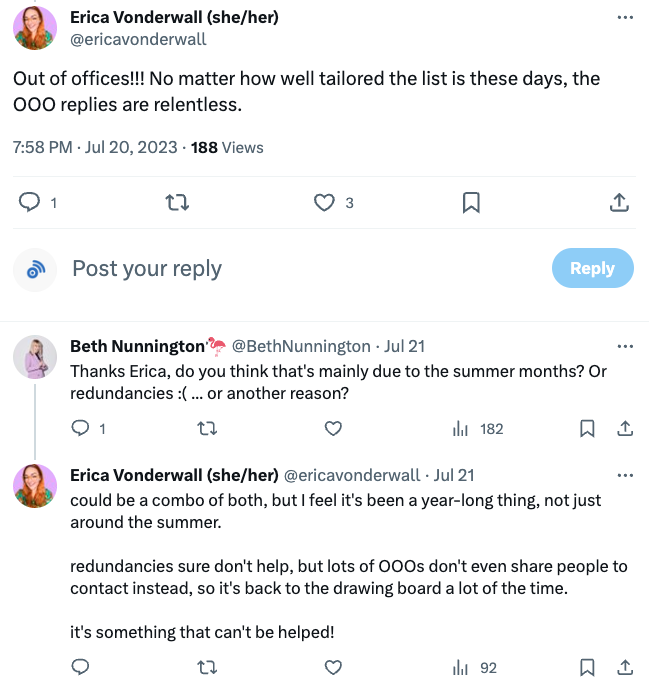
Solution:
You can’t predict personnel changes, but you can do your research to look out for signs of change and know who’s active at the point of pitching.
Start with social
Most journalists will update their professional network when they land a new gig. Make sure you check their posts before pitching.
Check their article activity
Check to see whether a journalist has a regular publishing cadence. If this has changed lately, it could be a sign that their inboxes are closed for now.
Make sure you know their current beat
Out-of-offices aren’t the only consequence of personnel changes. PRs also risk pitching irrelevant content since journalist beats are changing from one day to the next.
Having visibility on a journalist’s latest contact details and content is key to helping you overcome the pitfalls of personnel changes.
Problem: Longer Lead Times
PRs are reporting longer turnaround times on article coverage — another likely symptom of understaffing.
What PRs have to say:
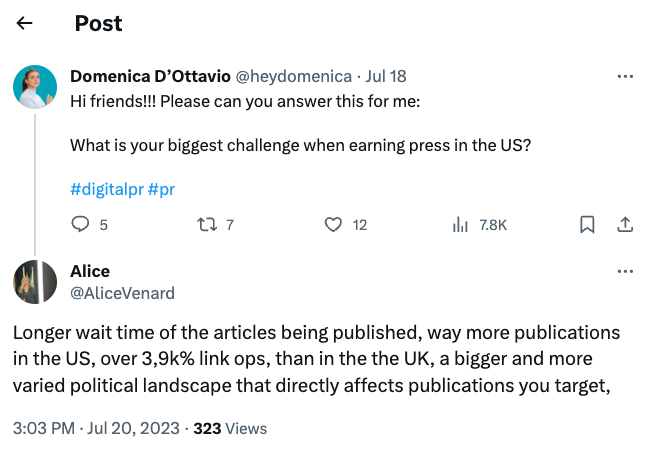
Solution:
Monitor a journalist’s coverage cadence before you start pitching. This will help you set realistic timelines and manage team/client expectations.
It can also help you find the journalists who are able to push through media at break-neck speed. Bump them right to the top of your media list.
Set journalist content alerts
Get a feel for a journalist’s publishing cadence by setting up author alerts.
Some publications like The Guardian allow you to do just that for their own journalists.
Tools like BuzzSumo’s Journalist Database can also notify you of new journalist content across thousands of publications.
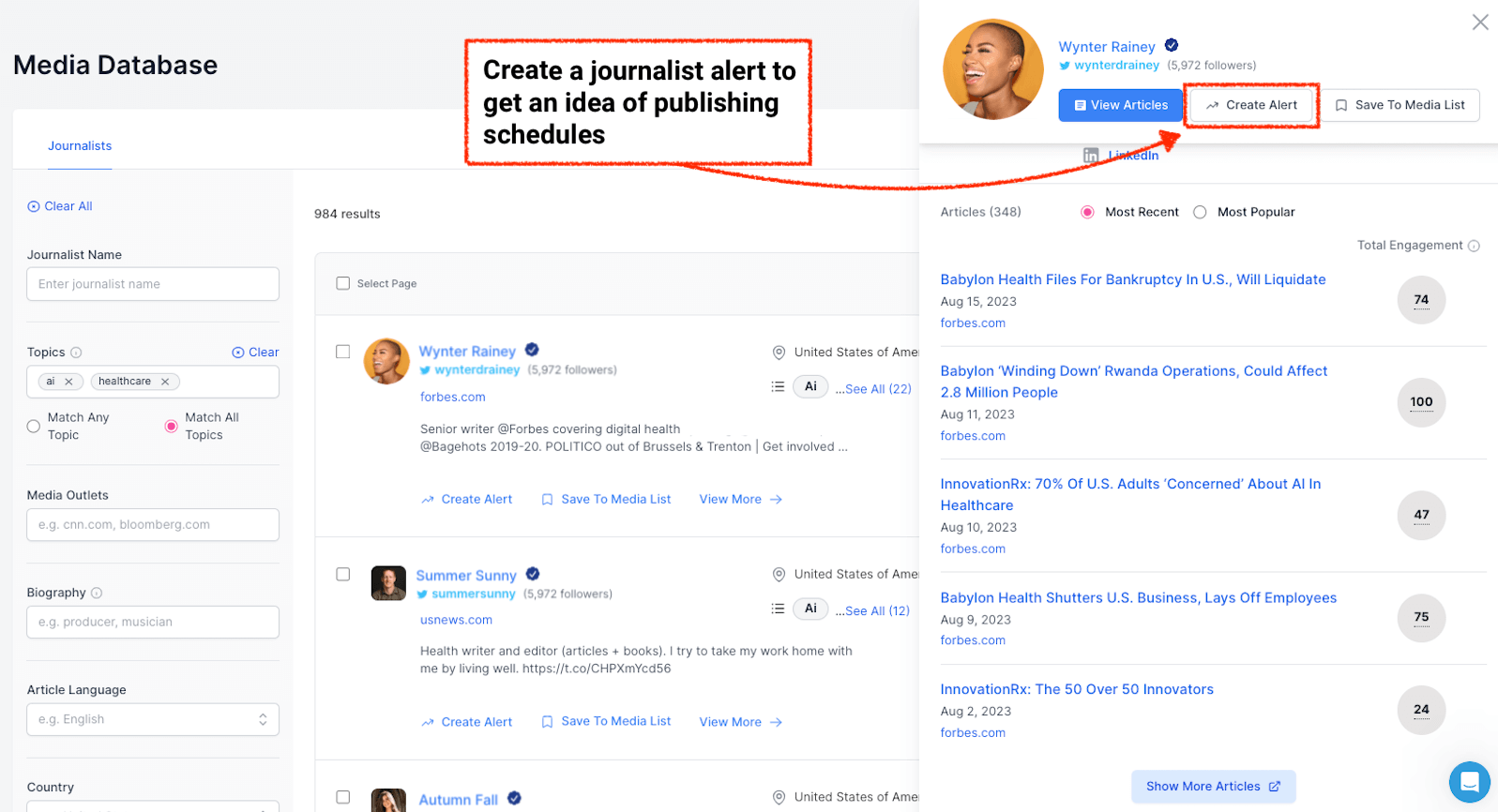
Remember that journalists AND media outlets determine lead times, so factor that into your estimations.
Problem: Getting Mentions – But Not Links
Picture the scene.
You’ve spent months building a relationship with your dream journalist.
Weeks creating a campaign you know they’ll love.
Days crafting a pitch that’s so personalized, you’re feeling a little Joe Goldberg.

Joe Goldberg: Known for his creeping in Netflix series “You”
Finally, the day comes. You land that piece of coveted coverage.
Then you realize: the journalist has given you a brand mention… but no link.

This is a major setback as links are often a PR’s number one KPI.
But it doesn’t have to be this way…
What PRs have to say:
“There is one national publication that will sometimes say they don’t provide backlinks as part of their company policy, and that isn’t true because we know they do — we’ve had links on the site before. I think referencing is often decided on a journo by journo basis, so it’s always worth asking!”
– Katy Powell, PR Director and Co-Founder, Bottled Imagination
Solution:
If links are a matter of journalist preference rather than publisher policy, then studying a journalist’s referencing style before pitching them is a no-brainer.
You can request a journalist drop you a link after the fact, but there’s a risk they’ll refuse.
That’s why studying their past references in the research phase is important.
You can do this in BuzzSumo. Just select your media list and search for mentions of the words “According to” in their articles.

Do they link to campaign landing pages? Do they link to home pages? Do they link, period?
It’s extra leg work, but the payoff can be huge.
Problem: Affiliate Links
Publications are putting affiliate links on PR coverage. This causes friction with clients, as it leaves a question mark over the SEO value of campaign links since they’re essentially paid for.
What PRs have to say:
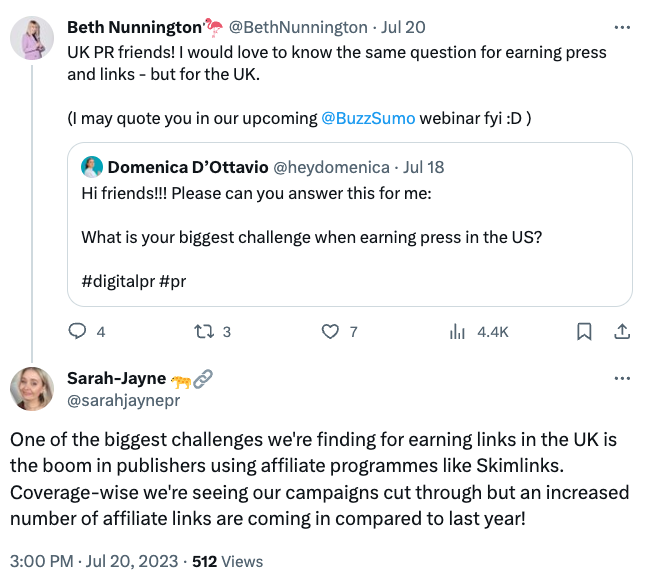
“We work with multiple ecommerce brands. If we get them a link, but it has Skimlinks applied, the publication earns a commission on any purchases. Because the link is redirected through the affiliate, the trust flow that would have gone from the publication directly to the client now has to go through another site. However, we would still report on this given the traffic and brand awareness the link provides.”
– Katy Powell, PR Director and Co-Founder, Bottled Imagination
Solution:
You can’t control whether a journalist applies an affiliate link to your campaign, but you can control your campaign content.
For instance, instead of writing an article on “The 10 Best Bridesmaid Dresses To Wear This Summer”, Bottled Imagination made the conscious decision to push out the piece: “This Is How Much Bridesmaids Are Spending On Average On Wedding Dresses This Year.”
In other words, they created content-led PR rather than product-focused PR.
This is a great tactic for maintaining quality PR coverage and avoiding affiliate links.
Problem: Link Buying
This is not a new problem, but a big one. Link buying is still, unfortunately, alive and well in PR and SEO.
What PRs have to say:
“Buying links is still popular in the U.S., despite Google outright condemning the practice. Because of this, we’re always educating brands on the importance of using digital PR to earn links rather than buy them. We also have to duck and dodge webmasters and other professionals offering links for a fee.”
– Bri Godwin Huyke, Digital PR Manager, Journey Further
Solution:
Link buying may still be a “thing,” but it’s not as easy for those PRs to buy their way to success anymore.
If you want to distance yourself from spammy PRs, you must forge real relationships with journalists.
This will help you earn links and organic brand mentions.
While links are still important, “Inferred links” are quickly becoming a key part of the SEO equation.
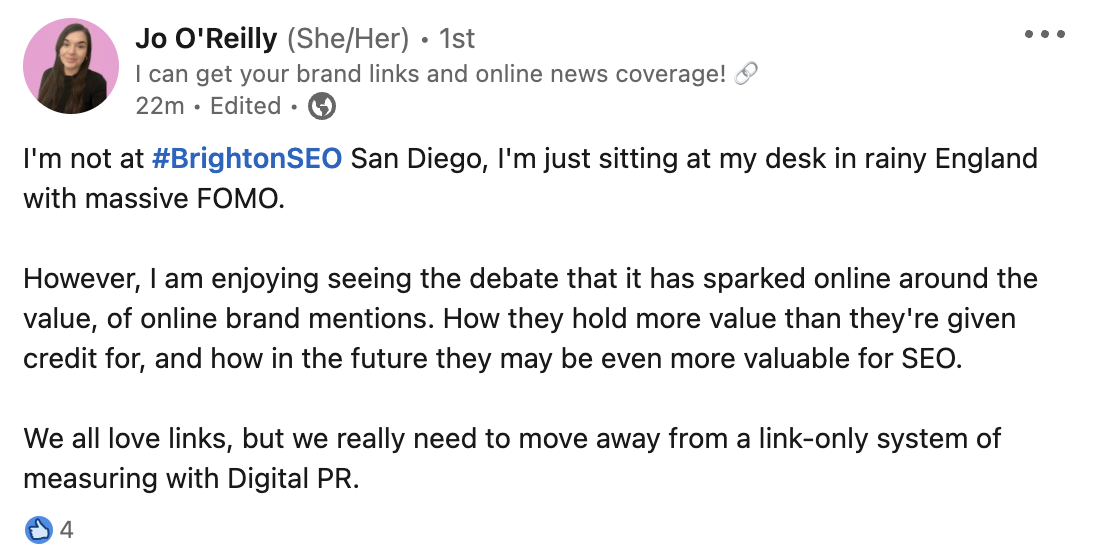
If you want journalists seeking you out, prioritize platforming your expertise on search and social to stay top of their mind.
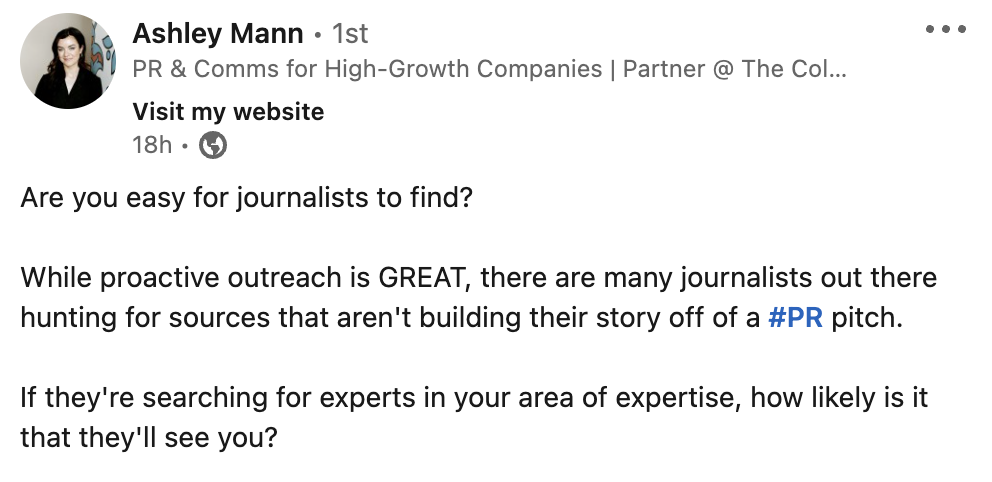
While link buyers are peddling their shady tactics, you’ll be busy building relationships, earning authoritative brand mentions, and future-proofing your PR.
Problem: Syndicated Links
Yet another consequence of editorial cutbacks, syndicated content has exploded over the last year.
Tricia Miller, Director of Digital PR at Digital Third Coast, explains:
“As a team of former journalists, we suspect the marked rise in syndication is the result of understaffed newsrooms and the ease of grabbing content from a shared network rather than spending hours putting something together from scratch.”
Google changed its policy on syndicated content in July 2023.
Rather than referencing the original content using a canonical tag, its best practice guidelines now state that publications should de-index syndications altogether.
Why? To prevent syndicated content from outranking original content.
Understandably, this development has left some skeptical of the SEO value of syndicated content, and PRs are feeling the pressure to land unique coverage every time as a result.
What PRs have to say:
“Syndication is out of our control. Some clients love it when it happens. Others don’t allow any credit at all and believe it doesn’t provide any SEO value. There’s definitely brand value. We haven’t noticed more large publishers following [Google’s no-index advice]. And in any case, we’d never report a link on a page that wasn’t indexed. I think clients believe (and rightly so) that Google has a firm grasp on original stories, and therefore counts the placements on those much more highly than on the syndication that can follow.”
– Nicole DeLeon, Founder, North Star Inbound
“It used to just be the rare “viral” campaigns that would be widely syndicated across different networks, but we’re now seeing content syndication happen in the majority of our campaigns, regardless of client and content type. From an SEO perspective, while the majority of our clients like to see the increase in links, we’ve seen a handful of clients who place greater emphasis on unique inbound coverage.”
– Tricia Miller, Director of Digital PR, Digital Third Coast
Solution:
You can’t control if your PR gets syndicated, but you can give yourself a better chance of landing unique coverage with carefully considered content.
Many PRs are realizing the power of creating – as Nicole DeLeon puts it: “Scaled localization”— when it comes to winning unique earned media.
In other words, creating one campaign that can work for:
- Different audiences of…
- Different publications in…
- Different locations, niches, or industries
Ranking formats work well for this kind of repurposable PR because they drive intrigue – readers in each location/industry/field/community (delete as appropriate) want to know how their cohort sizes up.
And if numerous audiences find it interesting, numerous outlets will publish it.
The key is to think of a topic with wide-scale appeal that multiple audiences can relate to — you can analyze the links and engagement of different journalist headline topics in the BuzzSumo Content Analysis Report.
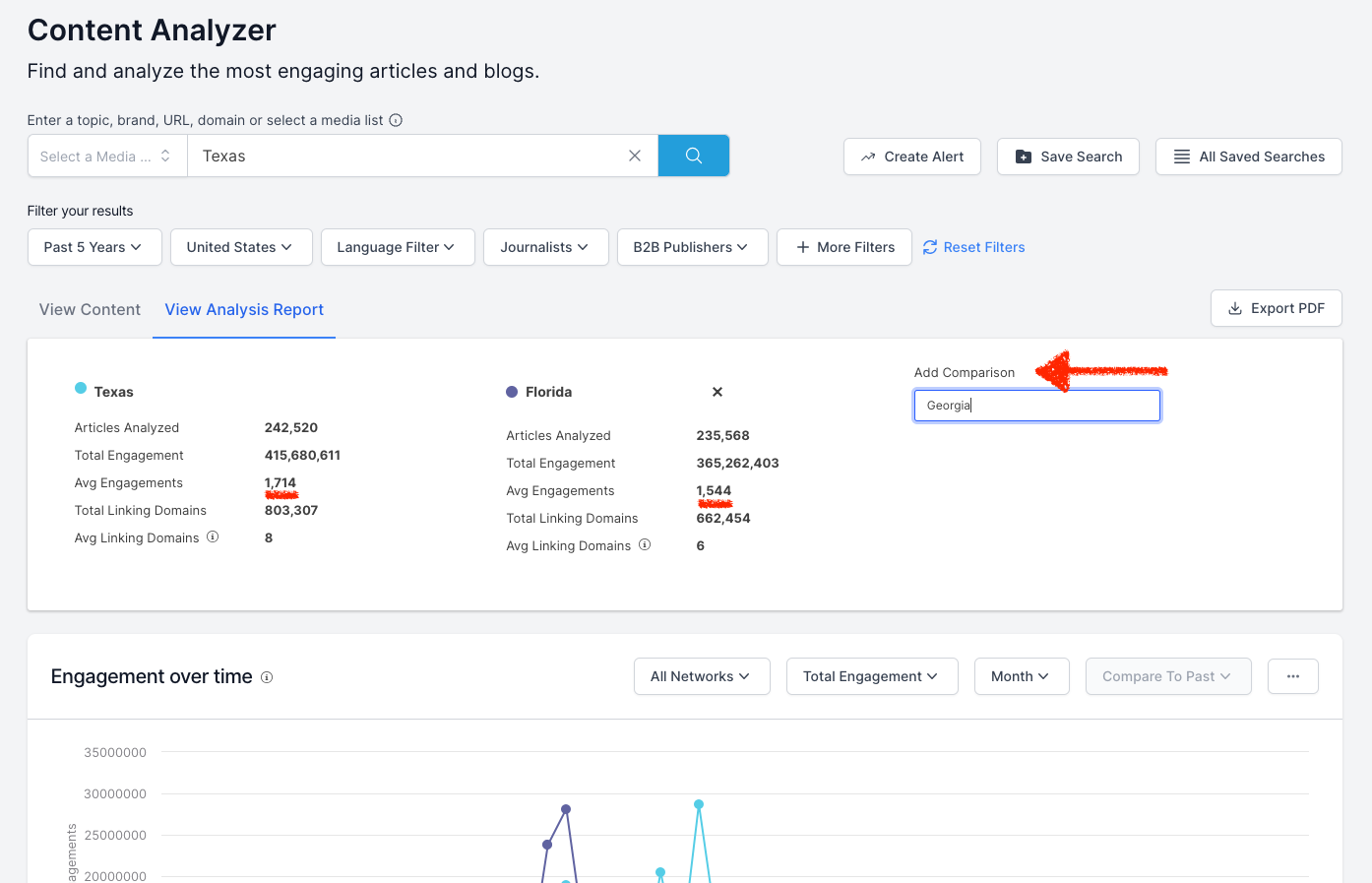
And if you really don’t want your PR syndicated by the main news aggregators, avoid pitching to these publications:
- Business Insider
- BuzzFeed
- New York Times
- AP News
- Newsweek
- Vice
- Variety
According to our research, they earn the most links from major syndicators like Yahoo, AOL, and MSN.
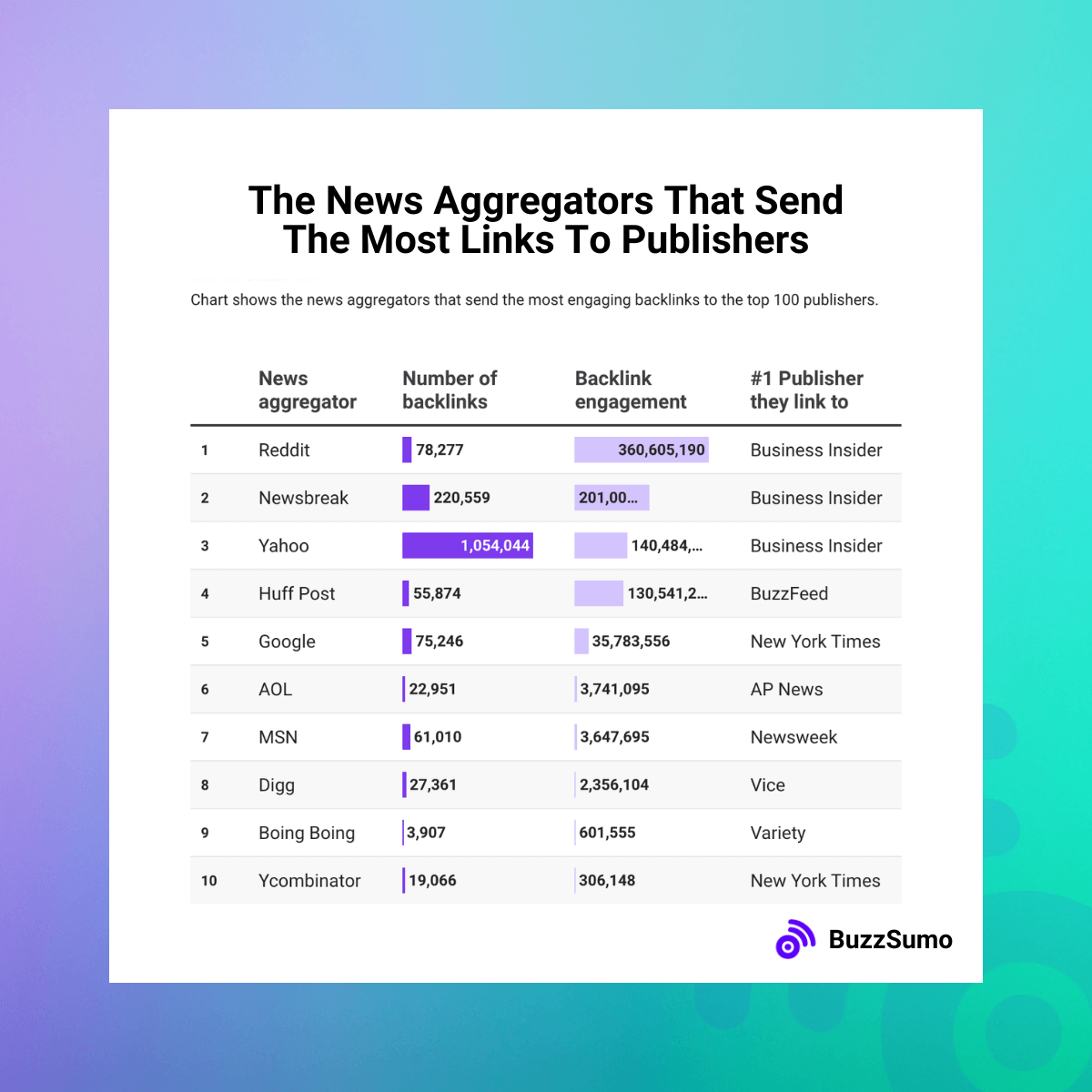
Problem: Fake AI Experts
There has been a rise in AI-generated “expert” commentary used in pitches. These fake experts hurt PR credibility and make it harder for real experts to gain coverage.
What PRs have to say:
“While AI has proved to be an incredibly powerful tool, we’re starting to see an increase in ‘fake experts’. Journalists rely on experts to add insight into their articles, but this rise in AI-generated expert comments can cause distrust between consumers and brands and make it more difficult for genuine experts to gain coverage.”
– Emily Salt, Digital PR Consultant, NORTH
Solution:
Cutting corners with AI commentary might work for some PRs now, but it won’t forever, and reputations will get tarnished in the process.
Focus on developing your E-E-A-T (experience, education, authority, and trust) so that your expertise is unavoidable if a journalist looks you up, and also make sure you loop in the marketing team to ensure your social proof substantiates that expertise.
But the solution to winning better coverage isn’t just about reinforcing your authority — as a PR pro who prides yourself with going to journalists with real expertise, you need to be pitching journalists who share those values.
Prioritize journalists who perform better in your outreach since they’re more likely to be invested in creating genuinely useful content.
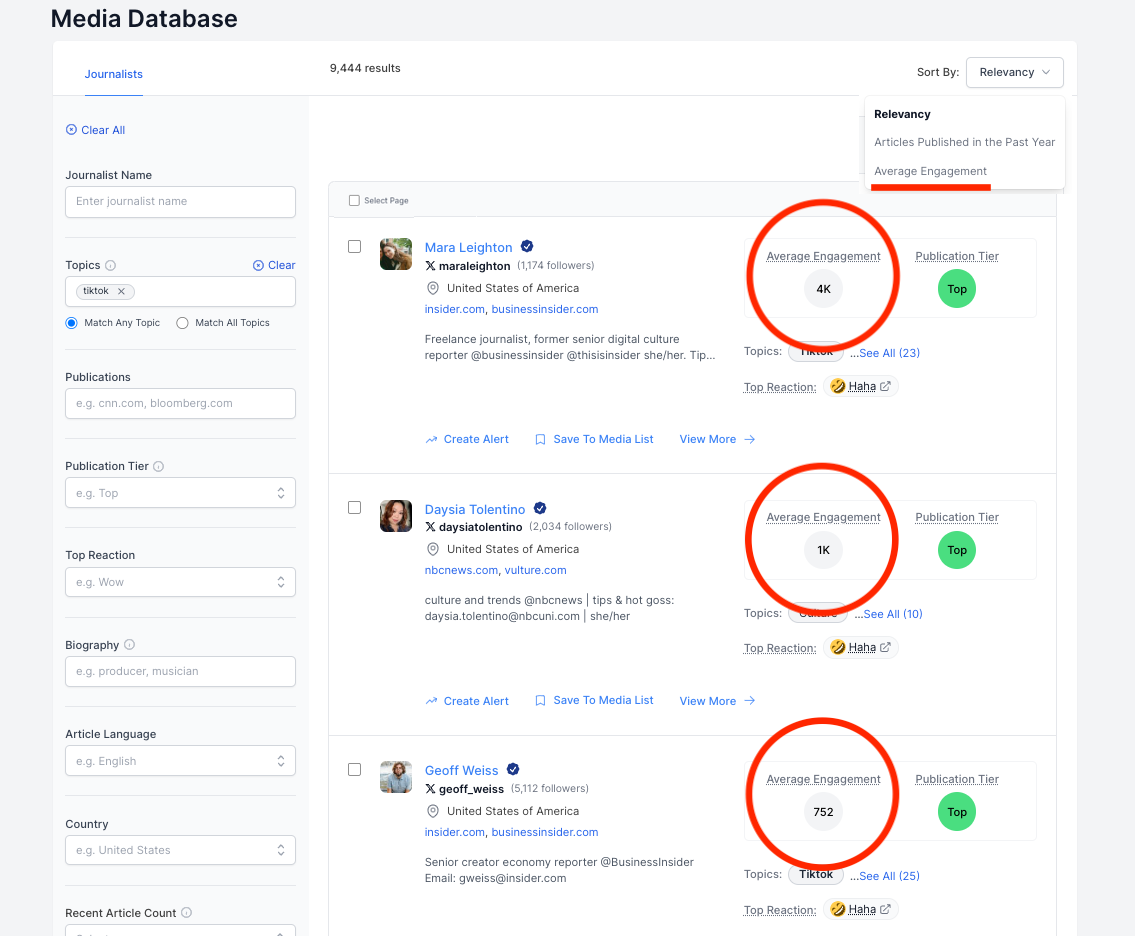
You can also scan journalist content for past “expert” references for quality assurance.
While this is a fairly manual process, it will save you pitching writers who give a platform to PRs that don’t really deserve it.
In other words, it will save you from sub-par coverage.
One way to do this is by heading over to Google News and searching the phrase “According to” plus the job title of an expert.
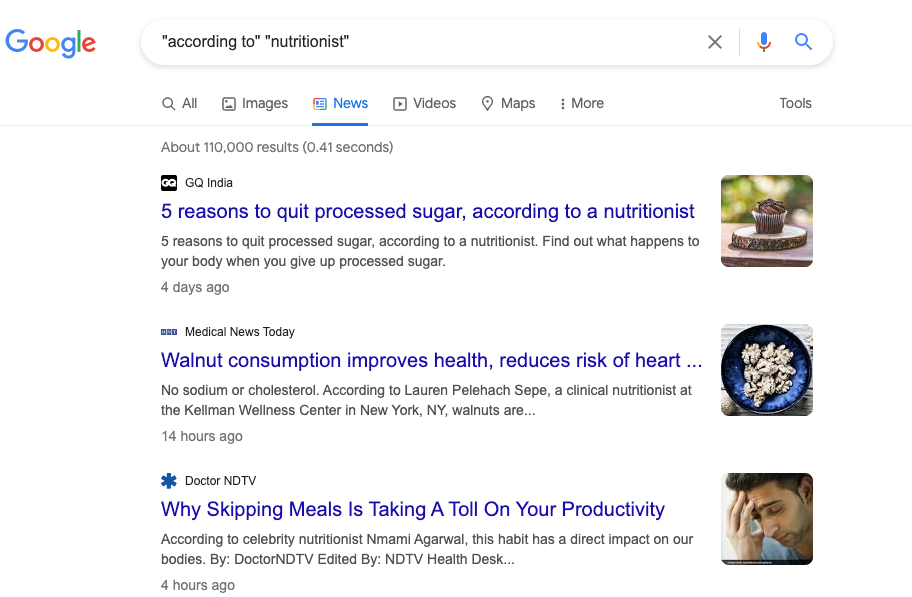
This should give you a better idea of the journalists and publications that are citing credible sources. Bank them to your media list for future outreach.
Wrapping Up
Remember:
- Build genuine relationships with quality journalists to earn repeat PR and differentiate yourself from spammy link builders. Consider creating evergreen campaign ideas that journalists will want to update periodically to give you another reason to stay in touch long-term.
- Create content-led PR to avoid publications adding affiliate links to your campaigns.
- Vet journalists and side-step those platforming artificial experts.
- Develop in-house and client expertise, then promote it widely to get in front of the right journalists.
- Study journalist referencing habits, and pitch the ones that award links – not just mentions.
- Use data to predict coverage turnaround times: Prioritize output-motivated journalists/publishers, and in all other instances, use publishing trends to manage expectations.
- Craft versatile PR content that appeals to diverse audiences to win unique coverage over syndications.
You’ll always come up against problems in PR, but the right combination of research, relationship building, and compelling content can save you (nearly) every time.
Key Questions
We’ve put together some questions you can ask yourself at the early stages of ideation and pitching to help you avoid common PR roadblocks.
